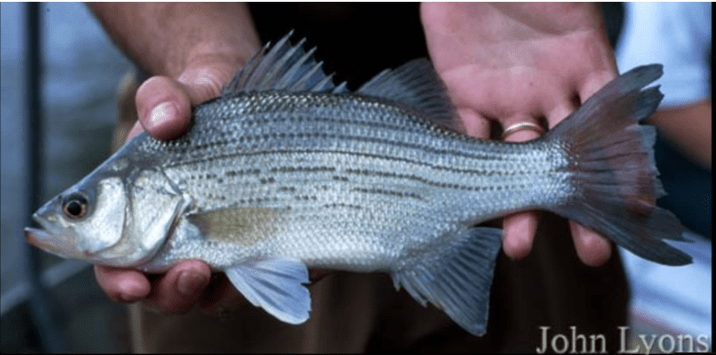Key Characteristics:
- 26 or less total myomeres
- Preanal myomeres:10-13
- Postanal myomeres: 10-12
- Preanal and postanal myomeres approximately equal (difference of no more than 1 myomere)
- Straight or S-shaped gut
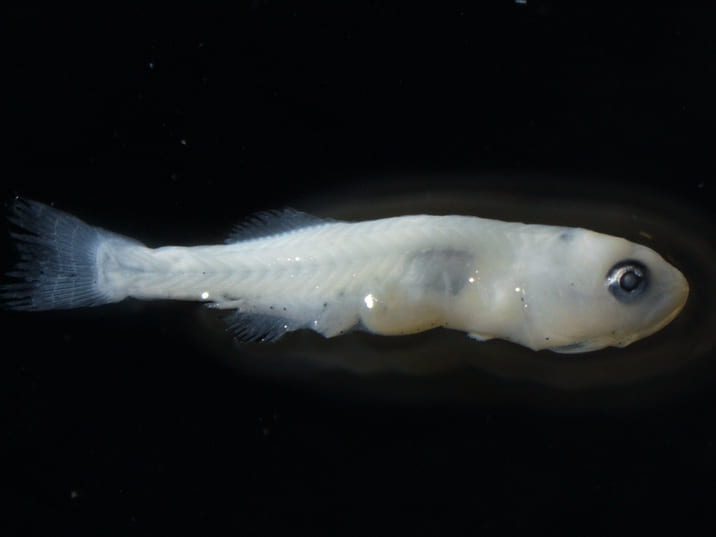
Larval White Bass. United States Fish and Wildlife Service. Marian Shaffer. 2017.
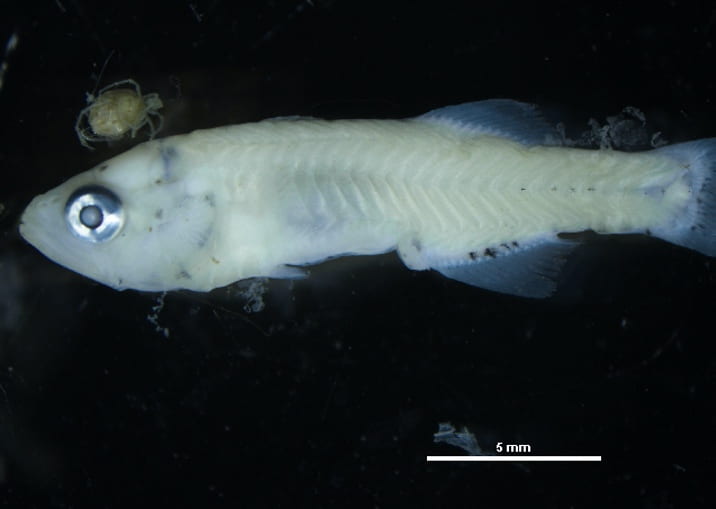
Larval White Bass. 16 mm. United States Fish and Wildlife Service. Green Bay, WI. Adam Dziewa. 2017.
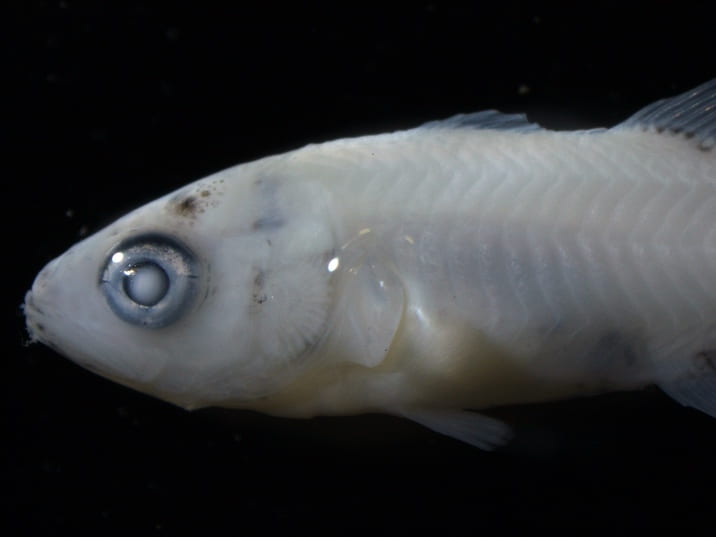
Larval White Bass. United States Fish and Wildlife Service. Marian Shaffer. 2017.
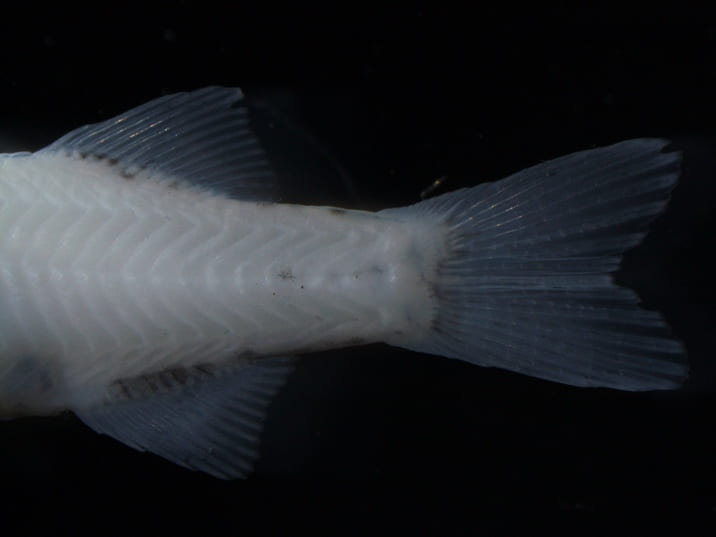
The Tail of Larval White Bass. United States Fish and Wildlife Service. Marian Shaffer. 2017.
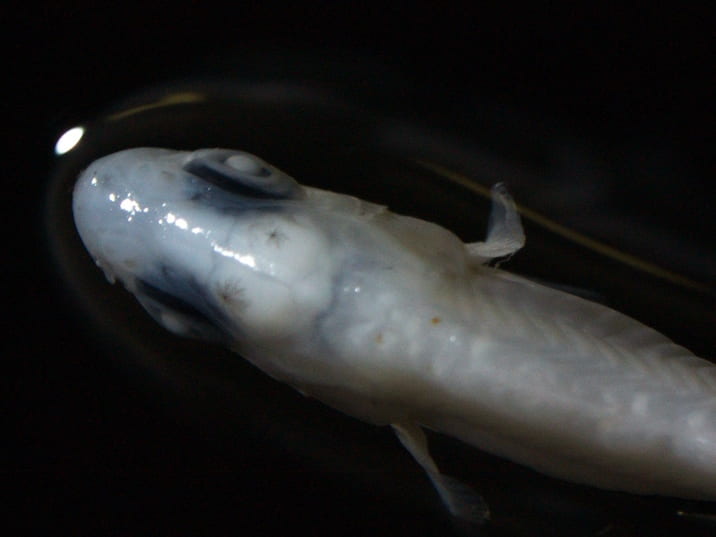
Larval White Bass. United States Fish and Wildlife Service. Marian Shaffer. 2017.

Larval White Bass. United States Fish and Wildlife Service. Marian Shaffer. 2017.
- Body not elongated, eel-shaped, round in transverse section, uniformly pigmented (1B)
- Chin barbels absent (3B)
- Snout short, its length usually less than 10% TL; median fins otherwise (5B)
- Median fins or finfolds showing distinct separation (7B)
- No adipose fin, or demarcation of one, in finfold (10B)
- Preanal myomeres greater than or equal to postanal myomeres (14A)
- Preanal myomeres approximately equal to postanal myomeres (difference five myomeres or less) (15A)
- Total myomeres less than 35 (20B)
- Total myomeres less than 26 (21A)
- Preanal myomeres usually equal to postanal myomeres (or difference of one); head smaller, pointed; mouth smaller, maxilla extending to middle of eye, caudal fin forked at 12 mm TL (22B)
- Percichthyidae – Moronidae – temperate basses
Adult History
- Physical Description
- Lower jaw protrudes beyond snout, black stripes are continuous on sides,
- Spawning Habitat
- Moving water
- Creek mouths, shallows of lakes, streams, and near the surface
- Around 1 – 2 meters deep
- Spawning Substrate
- Eggs are deposited over logs, algae, rocks, gravel, and sand
- Spawning Behavior
- Polyandrous Mating
- Do not build nests or form mating pairs
- As the female lays her eggs, males will follow her trying to fertilize the eggs
- Migrate through tributary streams
- Time of Year
- Late April or Early May – June in Lake Michigan
- Spawning typically takes place at water temperatures of 53 – 61°F
- Extreme recorded temperatures for spawning: 75°F
- Diet
- Piscivore
- Insects, insect larvae, crustaceans, zooplankton, invertebrates, and small fish

